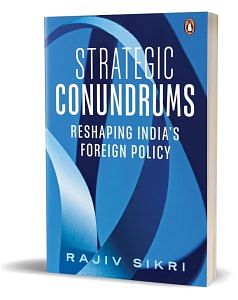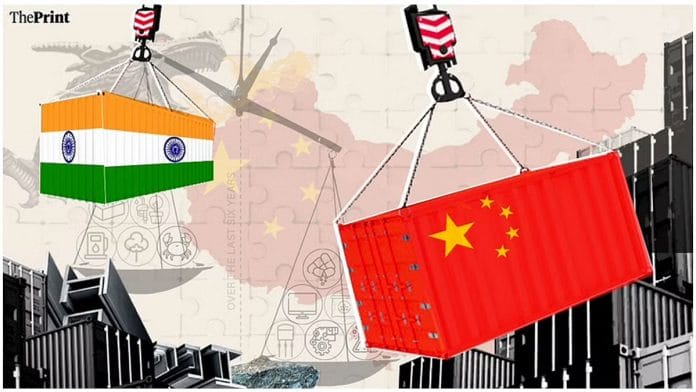China’s recent aggressive actions and postures make it clear that it is in no hurry to conclude a boundary settlement with India and that its long-term intentions towards India are hostile. Before Galwan, India’s approach to the border issue and to overall relations with China was somewhat muddled. A sense of history was missing in its approach towards China. All this has changed now. Post-Galwan, the Indian leadership is quite clear that in the long term India’s relations with China are likely to remain hostile, at best adversarial. This skirmish has completely eroded India’s trust in China. There has been no substantive engagement at the highest political level for four years.
As India cannot afford to risk losing whatever disputed areas it already holds, it has no alternative but to patiently wait till its own economic strength and standing in the region and the world is comparable to that of China, or hope that China’s position weakens. Like China, India too should not show undue anxiety to settle the boundary question. India can keep China engaged and let the border talks continue. But India has changed its tactics. India has stepped up its vigilance on the border and remains firm and confident that it can handle Chinese border provocations.
In a welcome and long overdue step, India has started to build up its logistics and infrastructure in the border areas, including the reopening of closed airstrips and the building of new ones in both Ladakh and Arunachal Pradesh. Work has been speeded up and more funds have been allocated for this purpose. In addition, the areas that are opened up by roads must also be settled with people, otherwise China could continue to nibble at them.
Although unsettled frontiers do remain a source of tension, chances are that after the Galwan incident there may not be armed clashes in the near future, as such a course of action carries considerable risks. Any adventurism will no doubt be effectively tackled at the military level by the Indian army, now much better prepared than in 1962. For China, the greater danger is that this would reinforce anti-China sentiment among its other neighbours who are also targets of its irredentist territorial claims. Even more dangerous would be the possibility that were such a move to go wrong, internal discontent and disturbances could be triggered within China.
India would be wise to develop leverages vis-à-vis China on the border issue. India must not show any signs that it is willing to compromise its principled position on its territorial integrity. China has not given up any of its claims; rather, it has hardened its position on Arunachal Pradesh and Ladakh, and has questioned the legitimacy of India’s decision to scrap Article 370. It is good that India has recently reiterated its claim to the Shaksgam valley of Pakistan-occupied Kashmir, which was transferred from Pakistan to China in 1963. It must persist in reasserting its concern over the Karakoram Highway linking Pakistan-occupied Kashmir with East Turkestan, which is now being upgraded into the China-Pakistan Economic Corridor (CPEC).
As part of its negotiating strategy, India must extend its claim lines into Tibet, beyond what it may eventually agree upon in a final settlement. It should put in a claim to Kailash and Mansarovar. If China can lay claim to Tawang in Arunachal Pradesh on the grounds of its cultural, historical and spiritual links with Tibet, the case for India’s claim to Kailash-Mansarovar region on similar reasoning is more substantive. After all, hundreds of millions of Hindus consider this the abode of Lord Shiva. Fortunately, India’s current leadership is convinced of the need to stand up to China to protect India’s vital interests. China would also be well advised not to misjudge India’s strength and resolve.
Over the last few years the boundary question has become more complicated and an early solution is highly unlikely. India must clearly understand that China is dragging its feet because it doesn’t want a settlement just now. Moreover, the public positions of the two sides are so far apart that it would be difficult to arrive at a compromise that is acceptable to the public in both countries. While the absurdity of China’s claims on Arunachal Pradesh precludes any compromise solution, in the Ladakh sector the best hope—admittedly a long shot from today’s perspective—is to convert the contested border regions into a frontier zone of cooperation, with transport and communication arteries running across the frontier for mutual benefit and interdependence.
Tibet as a Key Factor
Tibet is the key to understanding China’s policy towards India in general and the India-China boundary question in particular. For too long India has viewed China as an East Asian country—an understandable perception, since China’s heartland lies in East Asia and its strategic importance for the rest of the world is as an East Asian power. But from India’s perspective, China’s importance lies primarily in its Eurasian character. It is in Central Asia, specifically Tibet and East Turkestan, that the political borders of contemporary India and China meet. It is China’s control of Tibet (and East Turkestan) that poses security threats to India.
From China’s security perspective, if Tibet were not a part of China, it would inevitably drift closer to India because of its geographical proximity as well as religious and cultural affinity to India. Unlike Tibet’s relationship with China, there is no history of hostility or war between Tibet and India. Aware that in the past Tibet held sway over parts of China, China is wary of any foreign presence and influence in Tibet, as Britain had established in the nineteenth century to protect its Indian empire. Given Tibet’s geography, any foreign influence there can only be Indian. When the Dalai Lama fled Tibet for India in 1959, China was uncertain about India’s attitude and feared that India could become a platform from which attacks on Tibet could be launched.
The content and the timing of Chinese prime minister Zhou Lai’s reported package-deal offer to Prime Minister Nehru in April 1960 to let China keep Aksai Chin in return for recognition of the McMahon Line is significant: the strategic Aksai Chin area would not be given up, but China was willing to recognize the McMahon Line in order to get some breathing space to consolidate its hold over Tibet.
From a ground-level perspective, Tibet is crucial because it is the geographical link between India and China. Unless there is all-round agreement that Tibet is a part of China, there is only an India-Tibet boundary, not an India-China boundary. Even the 1914 Shimla Agreement that delineated the McMahon Line was signed between India and Tibet; the Chinese representative only initialled the agreement, which China later denounced.
China rightly believes that a settlement of the India-China border has implications for the status of Tibet. From a political perspective, China would like to have Tibet recognized as an inalienable part of China, not only now but historically too; otherwise the Chinese takeover of Tibet will lack legitimacy and will always be considered an imperial conquest. As such, China is not likely to settle the boundary question with India, unless it has definitively resolved the question of Tibet on its terms and Tibet is firmly under its control. Whether and when this may happen remains to be seen.
Arunachal Pradesh matters to China because the Chinese leadership has projected it as ‘Southern Tibet’, and therefore, China’s inability to bring Arunachal Pradesh into China could be seen as weakening China’s claim on Tibet itself. The specific claim to Tawang on the specious ground that this was the birthplace of the sixth Dalai Lama is not because the Chinese have any respect for this institution (quite the contrary) but because they see it as legitimizing their control over the institution of the Dalai Lama, and thereby, Tibetan Buddhism, which is seen by China as a threat to its rule over Tibet and a challenge to its goal of colonizing it. This line of thinking appears to have been reinforced as a result of the widespread disturbances and violence in Tibet and elsewhere over the last decade and a half.
 This excerpt from Rajiv Sikri’s book ‘Strategic Conundrums: Reshaping India’s Foreign Policy’ has been published with permission from Penguin Random House India.
This excerpt from Rajiv Sikri’s book ‘Strategic Conundrums: Reshaping India’s Foreign Policy’ has been published with permission from Penguin Random House India.






